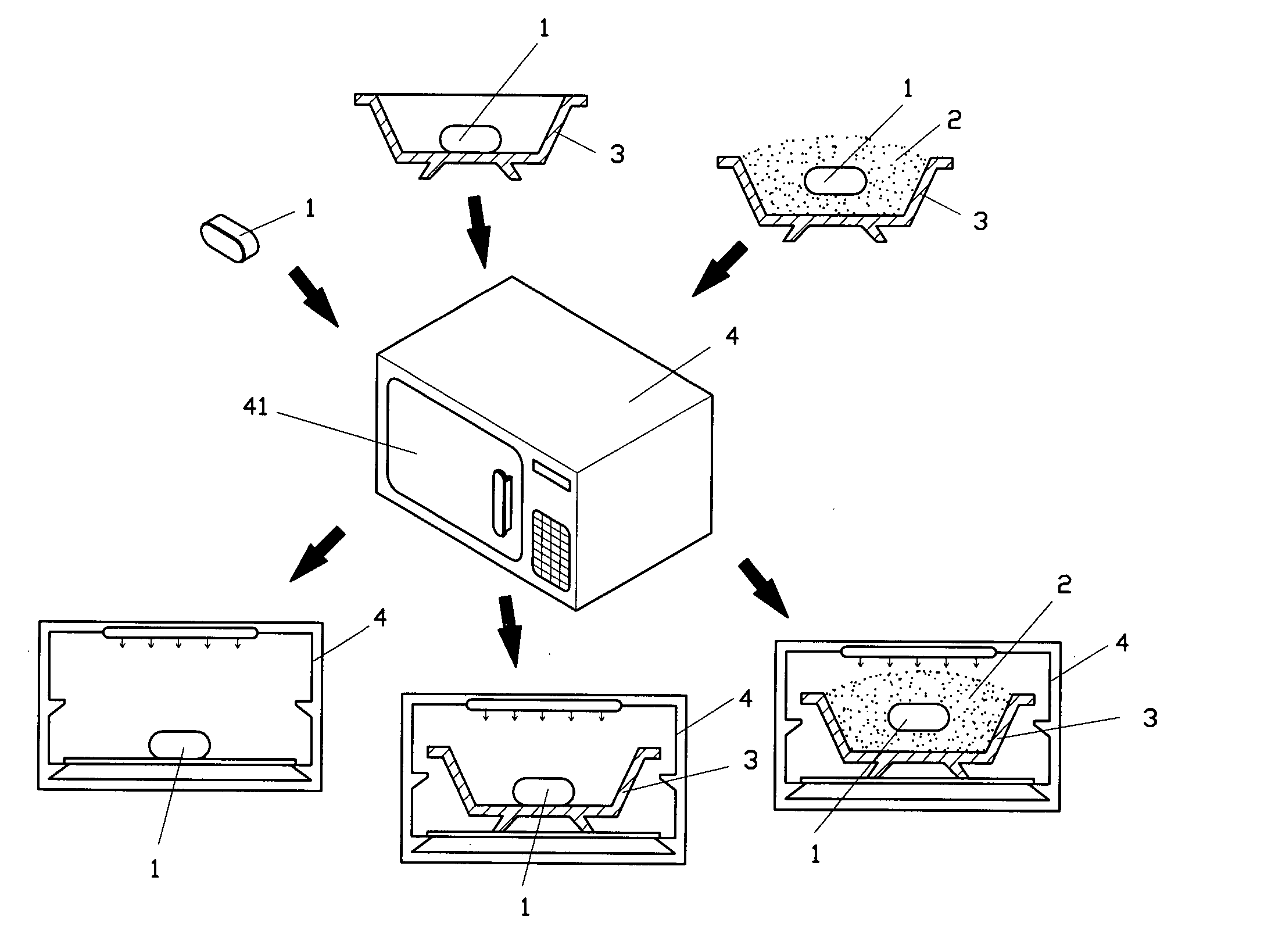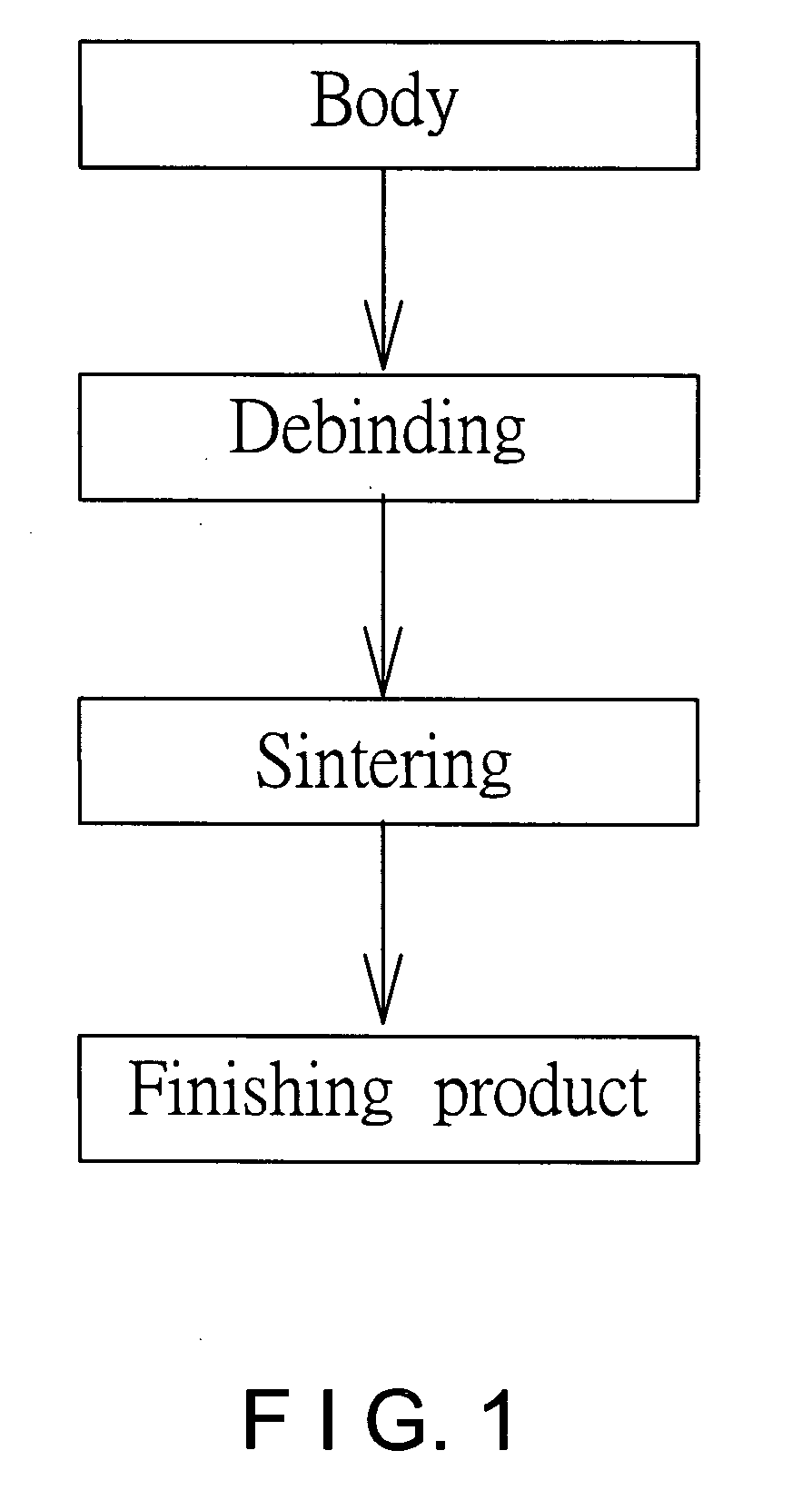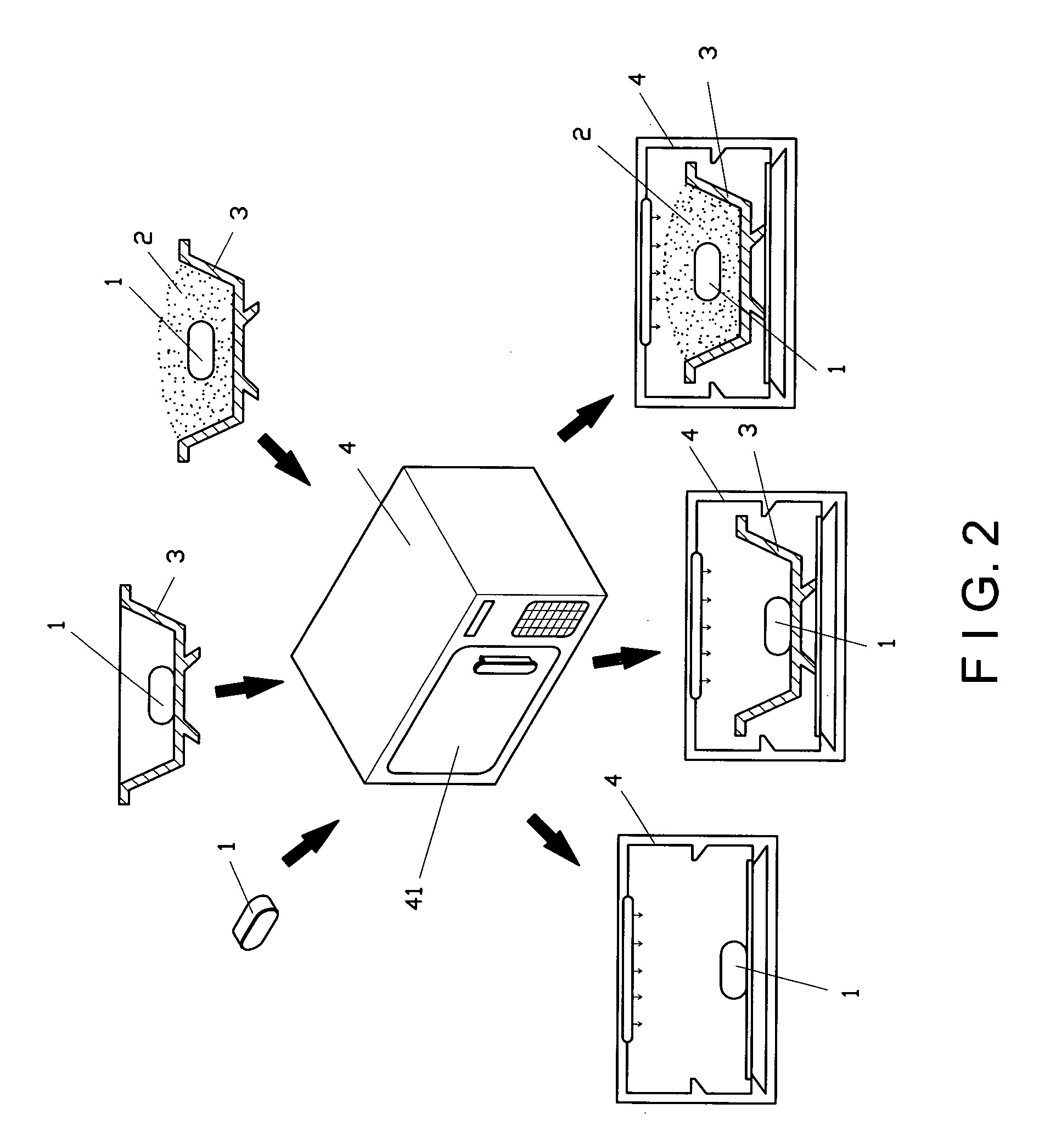Manufacturing process using microwave for thermal debinding
a manufacturing process and microwave technology, applied in the direction of coatings, etc., can solve the problems of increasing processing costs, increasing time and energy for pre-heating and heat maintenance, and consuming considerable amounts of energy, so as to accelerate production procedures, reduce production costs, and rapid drying
- Summary
- Abstract
- Description
- Claims
- Application Information
AI Technical Summary
Benefits of technology
Problems solved by technology
Method used
Image
Examples
Embodiment Construction
[0028] To better understand the manufacturing process and functions of the present invention, descriptions shall be given with the accompanying drawings below.
[0029] Referring to FIG. 1, procedures of powder metallurgy are: a. forming a body, b. debinding, c. sintering, and d. finishing product. The invention is a manufacturing process using microwave for thermal debinding. When being applied in powder metallurgy, the invention comprises the steps of: [0030] a. forming a body: powder of iron, nickel and copper is mixed with a weight ratio of 90:6:4, and the mixture is then blended with a mixture of low density polyethylene (LDPE), ethylene vinyl acetate (EVA), paraffin wax (PW) and stearic acid (SA) with a weight ratio of 12:12:61:15 at a temperature range between 120 to 160° C. for forming a body 1; wherein the aforesaid metal may be pure metals or alloys of iron (Fe), titanium (Ti), copper (Cu), magnesium (Mg), nickel (Ni), chromium (Cr) and manganese (Mn); [0031] b. debinding: t...
PUM
| Property | Measurement | Unit |
|---|---|---|
| temperature | aaaaa | aaaaa |
| power | aaaaa | aaaaa |
| reaction time | aaaaa | aaaaa |
Abstract
Description
Claims
Application Information
 Login to View More
Login to View More - R&D
- Intellectual Property
- Life Sciences
- Materials
- Tech Scout
- Unparalleled Data Quality
- Higher Quality Content
- 60% Fewer Hallucinations
Browse by: Latest US Patents, China's latest patents, Technical Efficacy Thesaurus, Application Domain, Technology Topic, Popular Technical Reports.
© 2025 PatSnap. All rights reserved.Legal|Privacy policy|Modern Slavery Act Transparency Statement|Sitemap|About US| Contact US: help@patsnap.com



